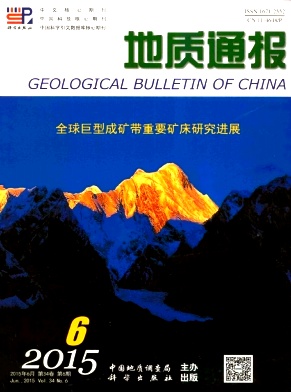JIANG Zhe1,2, CONG Peizhang3, NIE Fengjun2, LI Qiangfeng1,2, CAO Yi2, ZHANG Weibo2,3, DING Chengwu2, WANG Fengxiang1,2. Production environment, geological characteristics and formation of the Fort Knox gold deposit, USA[J]. Geological Bulletin of China, 2015, 34(06): 1026-1035.
| Citation: |
JIANG Zhe1,2, CONG Peizhang3, NIE Fengjun2, LI Qiangfeng1,2, CAO Yi2, ZHANG Weibo2,3, DING Chengwu2, WANG Fengxiang1,2. Production environment, geological characteristics and formation of the Fort Knox gold deposit, USA[J]. Geological Bulletin of China, 2015, 34(06): 1026-1035.
|
Production environment, geological characteristics and formation of the Fort Knox gold deposit, USA
-
JIANG Zhe1,2, CONG Peizhang3, NIE Fengjun2, LI Qiangfeng1,2, CAO Yi2, ZHANG Weibo2,3, DING Chengwu2, WANG Fengxiang1,2
-
1. Shijiazhuang University of Economics, Shijiazhuang 050031, Hebei, China;2. Institute of Mineral Resources, CAGS, Beijing 100037, China;3. Shandong Zhaojin Group Co., Ltd., Zhaoyuan 265400, Shangdong,China;4. Development Research Center, China Geological Survey, Beijing 100037, China
-
Abstract
Located in east-central part of Alaska, USA, the Fort Knox gold deposit is one of the largest superlarge gold deposits in Arctic circle. The study of its geological setting, orebody features and ore genesis indicates that the deposit was mainly formed in the contact zone of Precambrian-early Paleozioc greenschist intruded by Cretaceous-Paleogene granitic rocks and prominently controlled by tectonomagmatic activity. It has an area of 1100×600m2 at surface but is gradually reduced with the depth. Unlike other intrusion-related gold deposits, the hydrothermal alteration of the deposit is well developed. Gold mineralization has close relationship with K-feldspar, albite, sericite and propylitization. Isotope chronologic evidence suggests that the metallogenic epoch is late Cretaceous-Paleogene (92.5±0.2Ma), suggesting a product of multi-stage magmatism. Based on the characteristics of isotopic data, ore-forming fluid and wall rock alteration, the authors have reached the conclusion that the ore-forming materials were mainly derived from granitic magma, the metallogenic process was related to the oxidized intermediate-acid intrusions and fluid activities, and hence the deposit should belong to the intrusion-related gold deposit.
-

-
-
Access History







 DownLoad:
DownLoad: